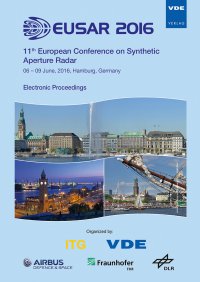MIMO-SAR Tomography
Konferenz: EUSAR 2016 - 11th European Conference on Synthetic Aperture Radar
06.06.2016 - 09.06.2016 in Hamburg, Germany
Tagungsband: EUSAR 2016
Seiten: 6Sprache: EnglischTyp: PDF
Persönliche VDE-Mitglieder erhalten auf diesen Artikel 10% Rabatt
Autoren:
Krieger, Gerhard; Rommel, Tobias; Moreira, Alberto (DLR, Microwaves and Radar Institute, Germany)
Inhalt:
MIMO SAR employs multiple transmit and receive channels to improve the imaging performance and to acquire novel geoinformation products. One example is SAR tomography, where the simultaneous transmission and reception with multiple antennas can provide a large number of baselines with a small number of antennas. In the limit, an appropriately designed MIMO-SAR configuration with NTx transmitters and NRx receivers can provide in total NTx ∙ NRx independent phase centers and therefore NTx ∙ NRx – 1 independent baselines for SAR tomography. The other extreme is provided by uniform linear arrays with co-located transmitters and receivers. Such configurations are characterized by a large number of overlapping effective phase centers and are therefore regarded as highly redundant. In this paper, we will show that such a redundancy is nevertheless well suited to resolve an inherent challenge of conventional SAR tomography, which is limited in providing unambiguous 3-D scatterer position estimates in case of multiple scattering. For this, we show that redundant MIMO arrays allow not only an a posteriori beamforming on receive, but, at the same time, also a comparable a posteriori (i.e. after data acquisition) beamforming on transmit. This means that one can emulate, from one and the same recorded MIMO-SAR data set, different illumination scenarios on transmit and receive. By evaluating the 2-D spectrum provided by the independent Tx and Rx beams, it becomes then possible to differentiate between single- and multiplebounce scattering. The separation between single- and double-bounce scattering has also been successfully demonstrated in a ground-based radar experiment and is presented in another EUSAR paper.


